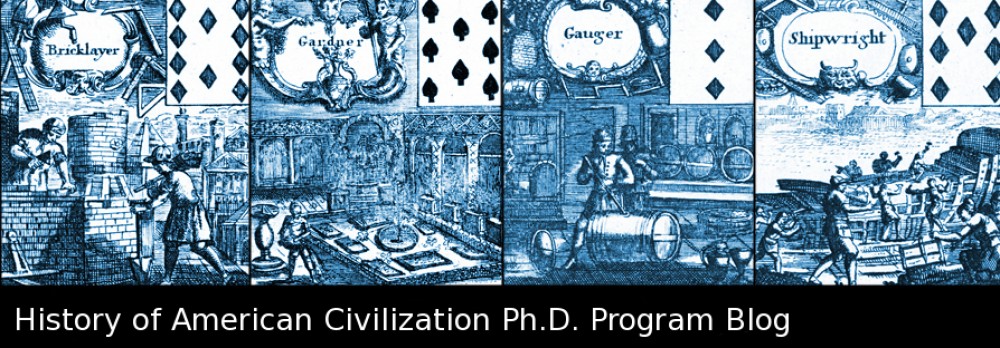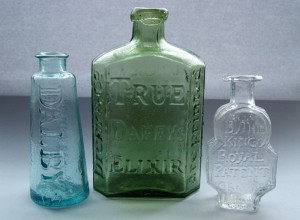Long before the DIYers at Pinterest promised 101 natural household cleaners to simplify our lives, before Gwyneth Paltrow and Blake Lively offered us tips on “life curation” that involved making heirloom tomato sauce and purchasing $1300 Pendleton wool cloaks, even before Martha Stewart created her first paper Christmas tree skirt and declared it a “good thing”, early Anglo-American advice writers instructed their readers on how to live frugal, healthy, and “beautiful” lives. Like the followers of today’s lifestyle gurus, early American readers purchased advice books on household management and new types of cookery with the hope of making their lives simpler. And like anyone today who has tried to replicate a craft project they saw on Pinterest or made Gwyneth’s Quinoa stuffed Kabocha, these early Americans probably realized they were buying a certain amount of hogwash.
Scholars hesitate to rely on prescriptive literature in their research because, as the name suggests, it was often aspirational, prescribing behaviors, practices, and material goods that the author believed would refine society—and which were missing from the majority of early American households. Although authors advertised their books as a necessity for every family, the advice they contained was geared towards the wealthier members of society. Advice written by a pseudonymous “Lady” or “Society of Gentlemen” encouraged the mistress of the household to mix her own silver polish, repair gold lace on gowns, or mend broken porcelain, ignoring the fact that the reader may not even own such luxuries, and if she did, would depend on her servants to care for them. The advice books assumed a level of affluence that was uncommon in most early American households. And unlike today, where those with the most money and leisure time are the primary audience for the DIY projects promoted by Gwyneth Paltrow’s Goop and Blake Lively’s Preserve, the leisured classes of early America usually occupied a supervisory role in household labor, directing the efforts of their servants to cook, make, and mend.
The advice contained within these books falls within several different categories. A substantial portion of the literature focuses on how to create imitations of popular consumer goods within the home, particularly popular patent medicines and elixirs. Other sections describe how to increase the durability of household goods, such as preventing rust on cutlery, preserving blankets from moths, and removing spots from woolen clothing. A surprising amount of advice centers on the use of household objects to deceive people and how to judge consumer goods so as not to be duped by others. Nearly every book I’ve encountered from the late 18th and early 19th centuries includes instructions on how to make cheaper woods look like mahogany, disguise brass as gold, or dress flax so it resembles silk. The same literature, however, reflects a fear of being deceived about the value of goods by others. Authors advise readers on how to detect adulteration in soap, gin, flour, and other items so they would not be poisoned or simply cheated out of their hard-earned money. Recipes for renovating rancid butter appear alongside methods for determining whether or not flour had been adulterated with no apparent sense of irony. Such recipes not only speak to people’s anxieties about misjudging new consumer goods, but also fears of being (accurately?) judged as poor and uncultured. These books may reflect more to people’s anxieties than their actual practices.
With such a scattershot approach to dispensing advice and poorly conceived ideas about its potential audience, is there anything useful to be gleaned from this literature? I would argue that for scholars of material culture, there is much to uncover. My current research focuses in part on how early Americans purchased, maintained, repaired, and lived with consumer goods. While some information on these practices can be deduced from period diaries, letters, probate inventories, and other sources (which all present their own unique challenges and limitations), aspirational literature maps out the constellation of goods familiar to consumers, even if some were beyond the reach of most people. It suggests that consumers sought advice about how to care for their new goods, that they sometimes sought substitutes for goods that were beyond their means, and that they could be suspicious of the quality of goods imported from beyond their town, region, or nation. And while most people didn’t employ the exact advice promoted in these books, they could adapt it to fit their own needs. Similarly, just because I don’t have an outdoor pizza oven in my garden like Gwyneth Paltrow, doesn’t mean I can’t try her recipes in my own, more limited, kitchen.
So, was anybody following these recipes and advice? At least a few were. Many advice books contain newspaper clippings for recipes and remedies for illnesses that suggest readers were using them as repositories of knowledge. An elusive hand-scrawled note may comment on a particular entry’s efficacy. Very occasionally other sources corroborate this prescriptive evidence. In her diary from December 1769, Hannah Callender Sansom described purchasing and mixing the ingredients for Daffy’s Elixir before spending the rest of the day mending. Daffy’s Elixir was a popular patent medicine composed of senna, brandy, fennel seeds and other ingredients that was first developed in late 17th century-England and used to treat a variety of stomach ailments. Its popularity is confirmed by the fact that a recipe for “true Daffy’s Elixir” is included in numerous books on cookery and domestic management from the period. While Sansom may not have obtained her recipe for one of these sources, she was relying on her DIY knowledge to produce the elixir rather than purchasing it at the store.
Although the Daffy’s Elixir recipes may have been successful, most other advice from prescriptive literature was probably hokum, the 19th-century equivalent of those “burn belly fat with this one weird trick…” ads on websites. A book from 1818 recommended repairing your broken china with a mixture of quicklime and Stilton cheese; the same book later noted that garlic juice created a good cement to mend broken dishes and glass. Other than making your dishes a bit cheesy and a bit smelly, it is unlikely these remedies would accomplish much. Several books recommended cutting up pieces of stale bread and using them to clean wallpaper hangings. I shared this tidbit with some museum professional friends expecting them to laugh. Instead, they confirmed that this technique was successful. “Oh no, that totally works—it’s like a giant eraser. The conservators use that trick all the time.” Another chimed in, “I heard that Wonder Bread is even better. In fact, it’s probably better to rub it on your walls than to eat it.”
So I guess the best advice I can offer is…to take most advice with a grain of salt. Consider the financial means and concerns of the intended audience when exploring prescriptive literature. Don’t assume that when books on household management were purchased they were consumed wholesale—people have a habit of adapting advice to their own needs and discarding anything that doesn’t fit their worldview.
And always rub bread on your walls if you want them to look like new.
 About the Author: Elizabeth Jones-Minsinger is a Ph.D. candidate in the History of American Civilization Program at the University of Delaware. She is writing her dissertation on women’s consumption in early America. You can follow her on twitter @LizJonesAll1Wrd.
About the Author: Elizabeth Jones-Minsinger is a Ph.D. candidate in the History of American Civilization Program at the University of Delaware. She is writing her dissertation on women’s consumption in early America. You can follow her on twitter @LizJonesAll1Wrd.




